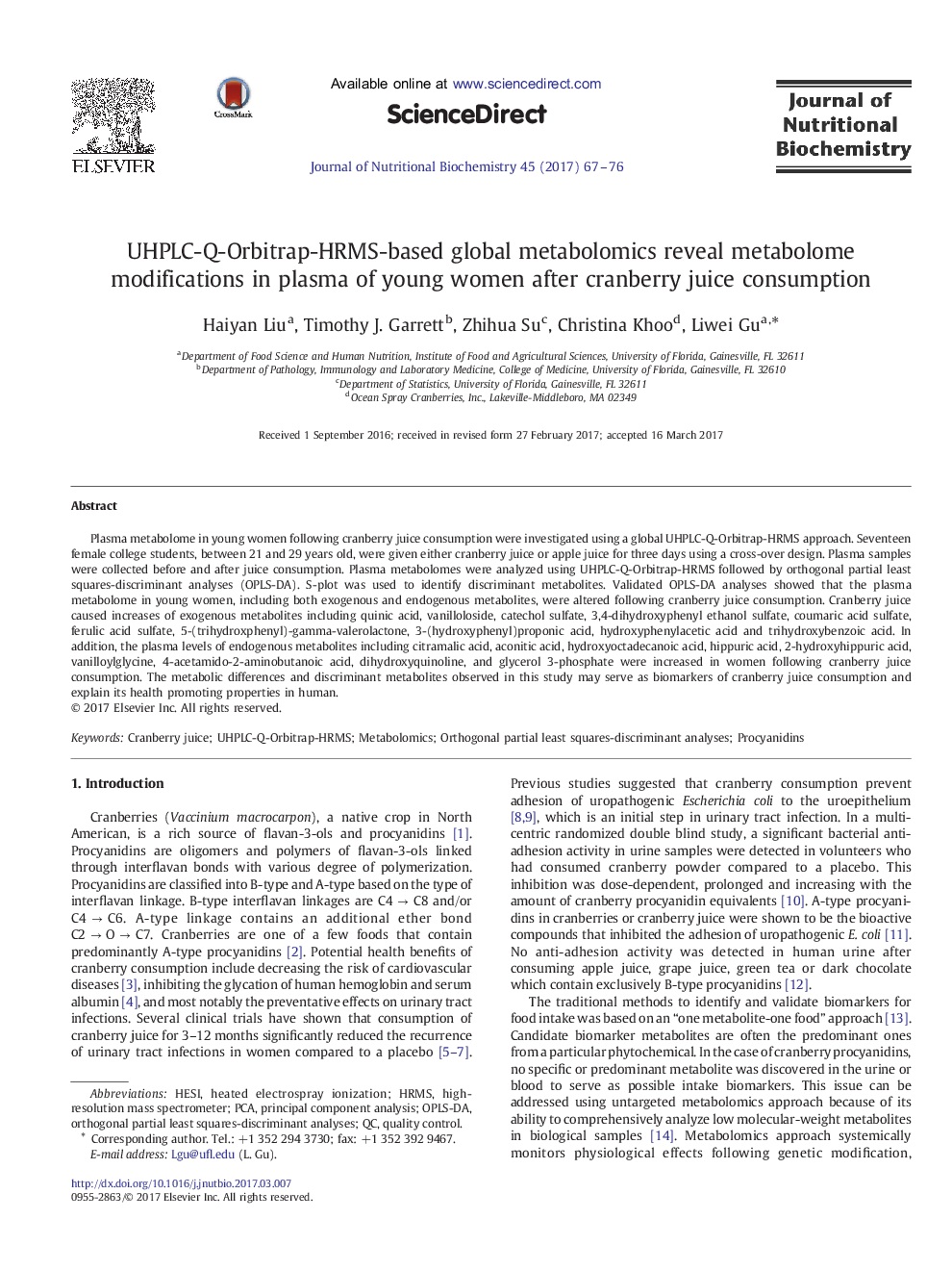| کد مقاله | کد نشریه | سال انتشار | مقاله انگلیسی | نسخه تمام متن |
|---|---|---|---|---|
| 5512821 | 1540623 | 2017 | 10 صفحه PDF | دانلود رایگان |

Plasma metabolome in young women following cranberry juice consumption were investigated using a global UHPLC-Q-Orbitrap-HRMS approach. Seventeen female college students, between 21 and 29 years old, were given either cranberry juice or apple juice for three days using a cross-over design. Plasma samples were collected before and after juice consumption. Plasma metabolomes were analyzed using UHPLC-Q-Orbitrap-HRMS followed by orthogonal partial least squares-discriminant analyses (OPLS-DA). S-plot was used to identify discriminant metabolites. Validated OPLS-DA analyses showed that the plasma metabolome in young women, including both exogenous and endogenous metabolites, were altered following cranberry juice consumption. Cranberry juice caused increases of exogenous metabolites including quinic acid, vanilloloside, catechol sulfate, 3,4-dihydroxyphenyl ethanol sulfate, coumaric acid sulfate, ferulic acid sulfate, 5-(trihydroxphenyl)-gamma-valerolactone, 3-(hydroxyphenyl)proponic acid, hydroxyphenylacetic acid and trihydroxybenzoic acid. In addition, the plasma levels of endogenous metabolites including citramalic acid, aconitic acid, hydroxyoctadecanoic acid, hippuric acid, 2-hydroxyhippuric acid, vanilloylglycine, 4-acetamido-2-aminobutanoic acid, dihydroxyquinoline, and glycerol 3-phosphate were increased in women following cranberry juice consumption. The metabolic differences and discriminant metabolites observed in this study may serve as biomarkers of cranberry juice consumption and explain its health promoting properties in human.
193
Journal: The Journal of Nutritional Biochemistry - Volume 45, July 2017, Pages 67-76